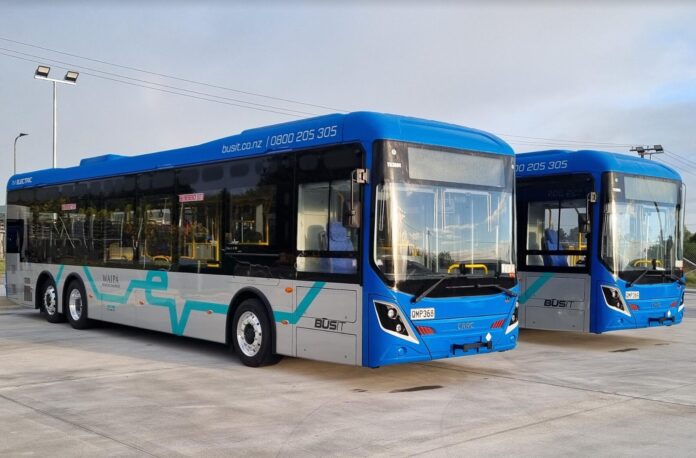Waikato’s first electric bus fleet will begin taking over Waipā regional bus services from Monday, 15 April, when the first of six new EVs starts roll out.
The new EVs replace the diesel buses that currently operate the Cambridge (20) and Te Awamutu (24) services and will work to an expanded and more frequent timetable that doubles the number of weekly services connecting the district to Hamilton.
Waipā District Council’s group manager service delivery, Dawn Inglis said the new EV buses and increased timetable are of huge benefit to the district.
“We are constantly looking at ways to improve how people get around our towns, as well as offering visitors other options to get here,” she said.
“The upgraded timetable and decreased environmental impacts are a win for everyone.”
Waikato Regional Councillor and Deputy Chair of the Future Proof Public Transport Subcommittee Angela Strange says greater frequency was a critical component of the Hamilton-Waikato Metro Spatial Plan.
“We’ve seen increasing frequency lead to greater passengers numbers across the network. People love the convenience,” she said.
” We know commuting between Waipā and Hamilton is very common and we’re confident more people will make use of these services.”
Each weekday, the Cambridge service increases from eight to 20 return trips and the Te Awamutu service from 9 to 19. On Saturdays and Sundays, both services increase from four to 13 return trips a day.
The extra trips mean Waipā’s regional bus services cover some of the longest distances in the country. Each bus will typically travel between 350 and 500 kilometres per day while most New Zealand public transport buses average 220 to 250 kilometres per day.
Waikato Regional Councillor and Chair of the Regional Transport Commitee, Mich’eal Downard says EVs were critical for the regional public transport objective to deliver services with at least net neutral carbon emissions between 2025 to 2050.
“Having this first fleet on the road shows we’re making great progress on our environmental goals. Taupō passengers have noticed how much cleaner our first bus has been and we’re sure people in Waipā will too,” he said.
The new buses can carry 75 passengers (37 seated and 38 standing) and while staff monitor patronage numbers to understand passenger demand on the new timetable, the diesel-fuelled ‘assist’ buses will remain on hand to make sure no one is left behind. Double decker electric buses are expected later this year too, which will boost capacity at peak times.
Both services will follow slightly different routes to accommodate charging. In Leamington, the Cambridge bus will travel from the depot in Pope Terrace straight onto Goldsmith, then Southey, Arnold and Shakespeare Streets. The Te Awamutu service will carry onto and terminate at Kihikihi, meaning the town will enjoy a seven-day service instead of the current Tuesdays and Thursdays. The batteries will take between two and four hours to be fully charged overnight at the depots.
Tranzit, which operates Waikato’s first electric bus in Taupō, will also provide the new services. Its general manager of bus and coach, Jenna Snelgrove says significant planning went into electrifying these routes, which included selecting the correct bus and batteries for Waipā’s roads, catering to the demands of longer trips, and ensuring passenger and driver comfort. The company welcomed 12 additional drivers and procured six brand new electric buses for the Waipā services.



